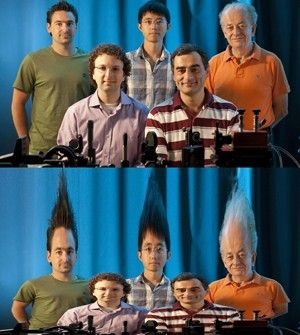Optical Discovery Defies Laws of Reflection and Refraction

Researchers at Harvard said they induced light to behave in a way that defies the old laws of reflection and refraction, an optical phenomenon that may lead to the development in medical technology such as vision correction and laser surgery.
The researchers' discovery at Harvard School of Engineering and Applied Sciences (SEAS) led to a reformulation of the mathematical laws that predict the path of a ray of light bouncing off a surface or traveling from one medium to another - for example, from air into glass. The results were published last week in the journal Science. The technique is called phase discontinuity.
"Using designer surfaces, we've created the effects of a fun-house mirror on a flat plane...Our discovery carries optics into new territory and opens the door to exciting developments in photonics technology," says co-principal investigator Federico Capasso, Robert L. Wallace Professor of Applied Physics and Vinton Hayes Senior Research Fellow in Electrical Engineering at SEAS.
The application of photonic technology in the medical field includes vision correction, laser surgery, surgical endoscopy, health monitoring and tattoo removal.
Reflection and Refraction
Conventional laws taught in physics classrooms around the world take into account that light travels at different speeds through different media and so, they predict the angles of reflection and refraction based only on the incoming angle and the properties of the two media.
However, the group of researchers found that when the light encountered a surface patterned with metallic nanostructures, the usual mathematical equations were insufficient to describe the phenomena.
Therefore, researchers were able to demonstrate that the boundary between two media, if specially patterned, became an "active interface" that can itself behave like a third medium capable of bending the light by itself.
"The resulting phenomenon breaks the old rules, creating beams of light that reflect and refract in arbitrary ways, depending on the surface pattern," wrote the team in a release at SEAS' site.



























